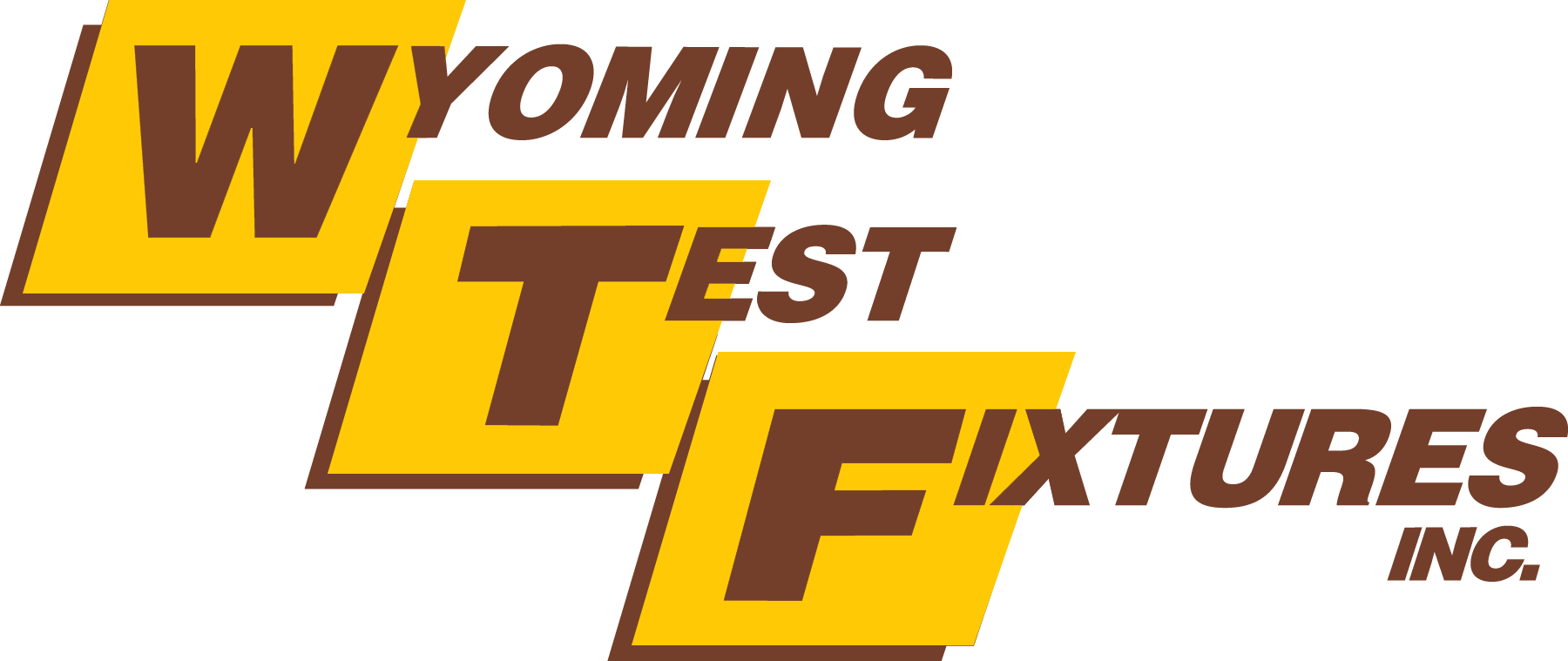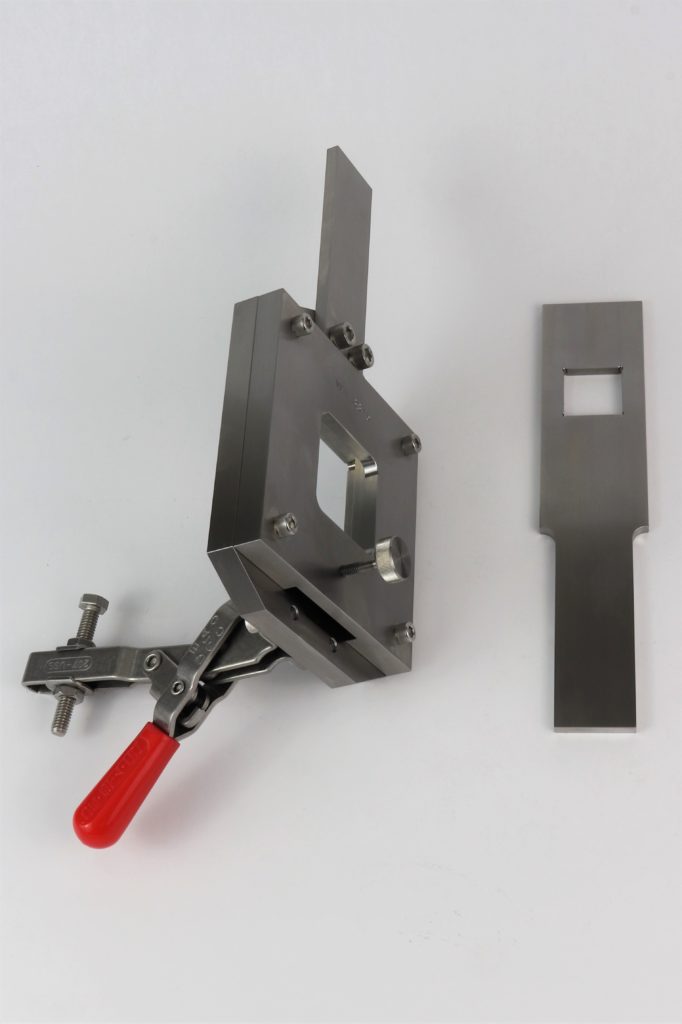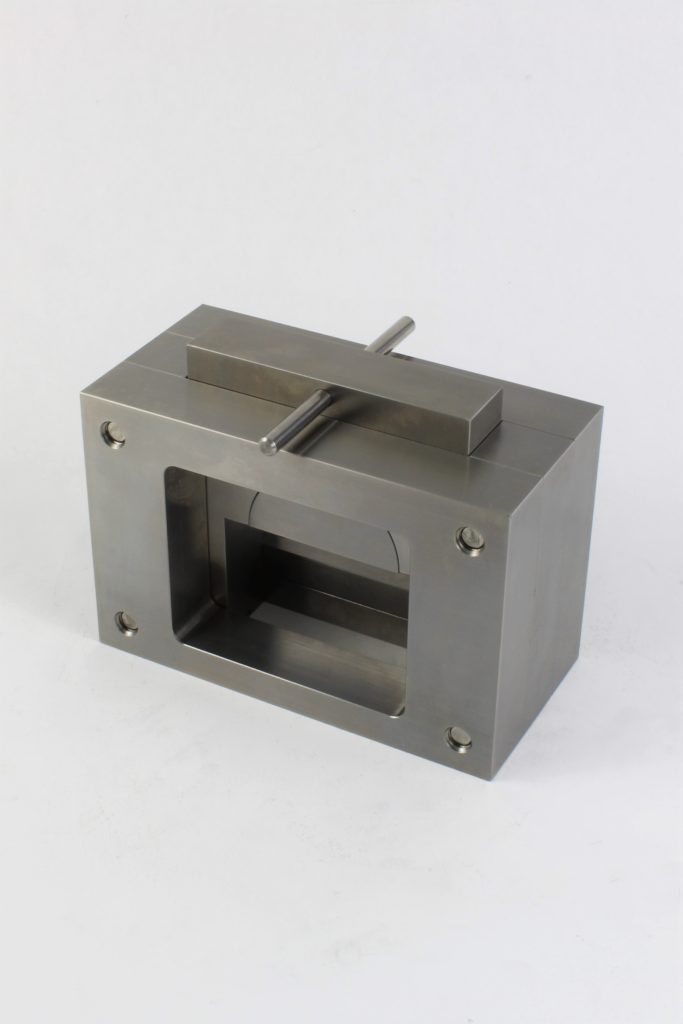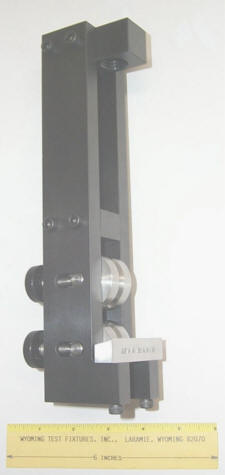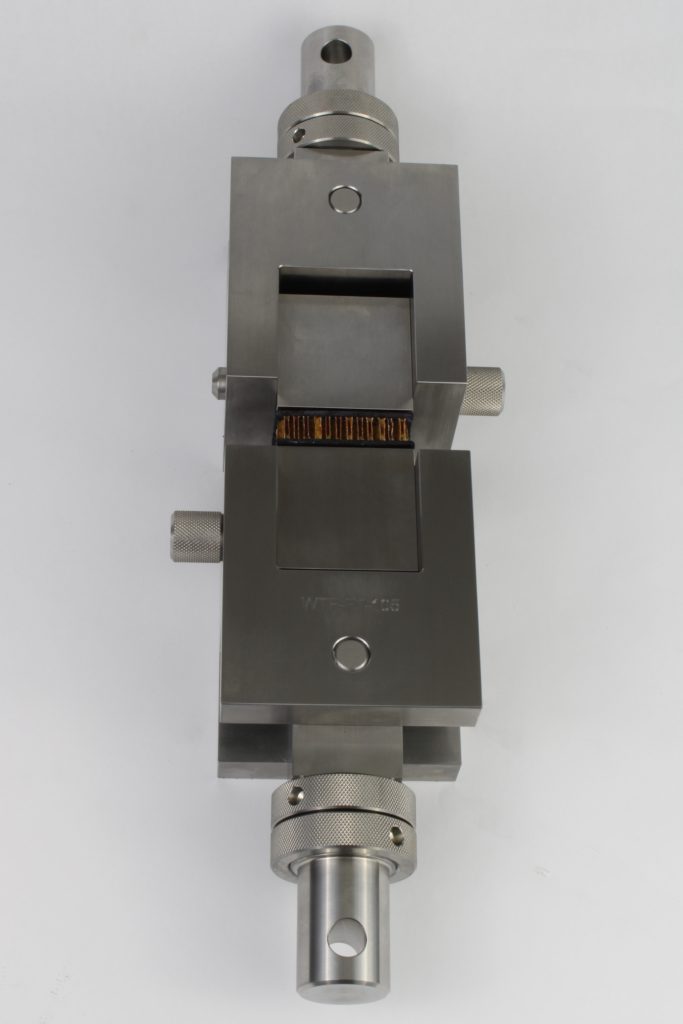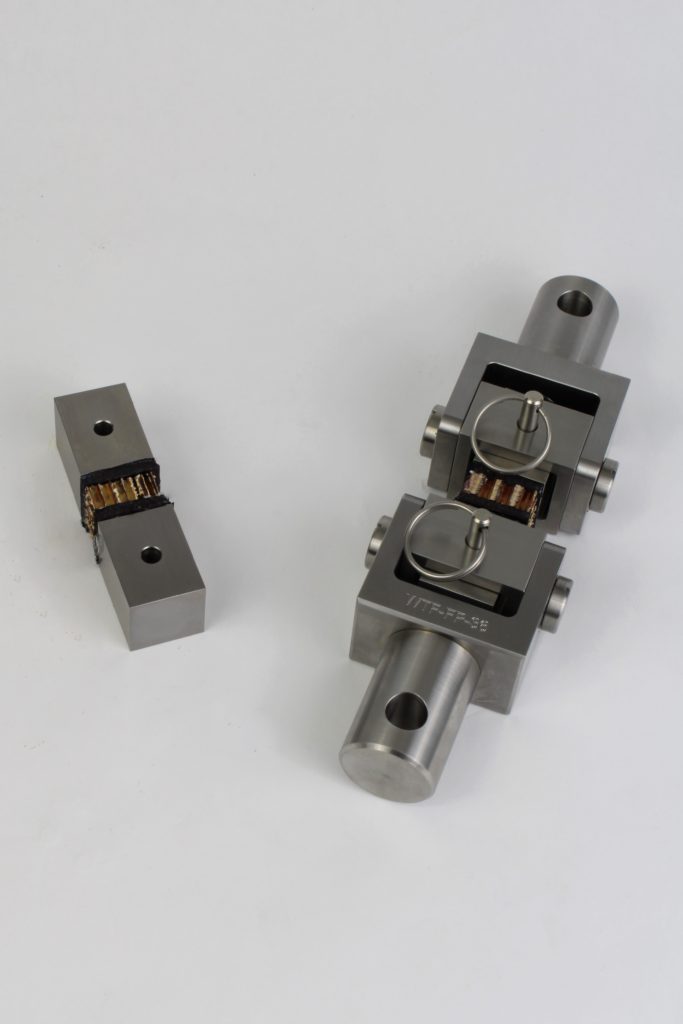Bond Testing
A variety of standardized test methods have been developed to evaluate the mechanical performance of adhesives and adhesive bonded joints. Test fixtures used for performing the most common test methods are listed below.
ASTM D4501 describes a procedure and test fixture used to determine the shear strength of an adhesive with a modulus lower than the materials it bonds. This is not very restrictive, as most practical adherends are stiffer than most adhesives.
Similar in basic testing principle is to ASTM D4501, the Lapped Block Shear method uses a compressive force to determine adhesive bond strength. This test method uses two equally sized blocks bonded together with a 1/4" offset, while ASTM D4501 uses a smaller block bonded in the center of a larger block.
J-3:Weld Shear Test Fixture
ASTM A497 & A185
This test fixture is used to determine the shear strength of the welds in welded wire fabric such as used for concrete reinforcement.
This test method performs a through-the-thickness tensile test of a sandwich panel. The strength of the core, a face sheet, or the core-facesheet bond, whichever is weaker, is determined. All four faces of the bonding block can be used.
This test method complies to the same standard as the 2" Flatwise Tensile fixture but uses smaller bonding blocks and specimens. Both fixtures can use cylindrical bonding blocks.
